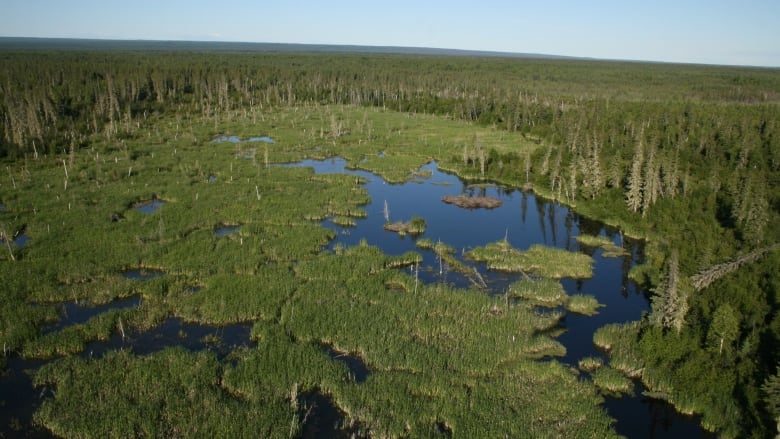Study suggests one-third of protected wildlife areas under intense human stress
Canada's protected areas in 'much better condition,' B.C. researcher says

A third of the world's protected areas for wildlife are suffering road-building, more farms and other man-made threats that are undermining goals to safeguard the diversity of life on Earth, scientists said on Thursday.
Almost 200 nations agreed in 2010 to set aside at least 17 per cent of the world's land areas in parks and other sanctuaries by 2020 as a cornerstone of a plan to shield animals and plants from pollution, land clearances and climate change.
But many protected areas fall short, according to a report in the journal Science, led by researchers at the University of Queensland in Australia.
"Six million squarekilometres 32.8 per cent of protected land is under intense human pressure," from threats including more roads, cities, farms and railways, the scientists wrote.
The good news, however, is that Canada's protected areas are faring far better.
"The study is generally a good news story for Canada," co-author Oscar Venter, a professor and research chair at the University of Northern British Columbia'sEcosystem Science and Management Program told CBC News. "In Canada it's just not that at all; we're at just 2.5 per cent.
"Our parks are in much better condition than the global average. And really, from the perspective of human pressures, our parks have been managed extremely well."
That's not to say we don't have our issues. Venternoted that, while this week's announcement that Alberta'sWood Buffalo National Park has been broadenedmakeit the world's largest protected boreal forest,external pressures threaten biodiversity within the park itself.
In the case of Wood Buffalo, the W.A.C Bennett Dam and theSite C Dam, both in B.C., can strip water from the park in an area that's the only mating ground for the endangered whooping crane.
"Inside the park there aren't major pressures, but outside the park, these things like altered river flowsbecause of dams are affecting the parks, as well as oil sands," Venter said.
"It's a good thing that we do expand parks to reach these targets, but we need to look at ecological integrity," Venter said.
'Paper parks'
The global area that is facing pressure is roughly equal to the size of India and Argentina combined. Mangroves, Mediterranean forests, some grasslands and savannahs were among protected areas most at risk.
James Watson, a professor at the University of Queensland and study co-author, told Reuters he was "stunned" by the data. "Governments are claiming these places are protected for the sake of nature when in reality they aren't," he said.
Overall, governments say the extent of protected lands has roughly doubled since the early 1990s and now covers 15 per cent of the world's land in more than 200,000 protected areas, the study said.
Among examples of threats, the study showed satellite images of Kamianets-Podilskyi, a growing city within a national park in Ukraine, roads slicing through Mikumi National Park in Tanzania, and farms and other buildings in Dadohaehaesang national park in South Korea.
- 'Protected' marine area open to oil, gas exploration
- Liberals, Indigenous leaders among those to set rules for marine protected areas
- Alberta now has world's largest expanse of protected boreal forest
The Convention on Biological Diversity (CBD), which oversees the 2020 plan, said it hoped Thursday's findings would spur more action to ensure that protected areas exist in more than name.
"There is indeed a risk for protected areas to be misrepresented as paper parks," Cristiana Pasca Palmer, executive secretary of the CBD, told Reuters in an email.
Among recommendations, countries should improve assessment and management of protected areas, and try where possible to connect them so threatened species can migrate.
Venter said that he was surprised and disappointed by the group's findings overall.
"I never thought we'd see such extensive pressure," he said.
with files from Nicole Mortillaro













_(720p).jpg)


 OFFICIAL HD MUSIC VIDEO.jpg)
.jpg)



























































































